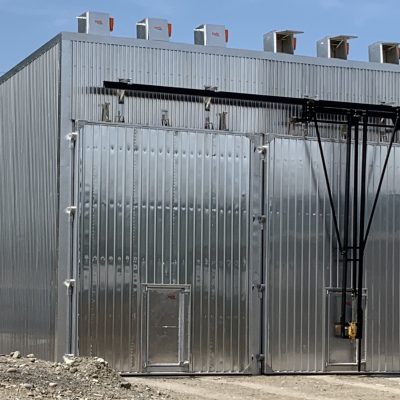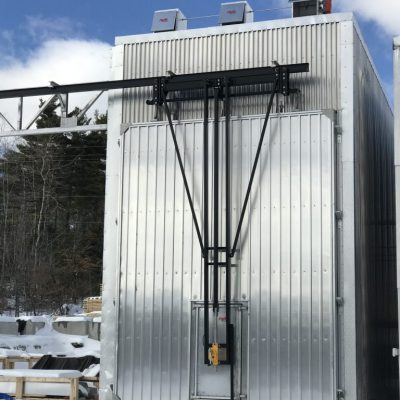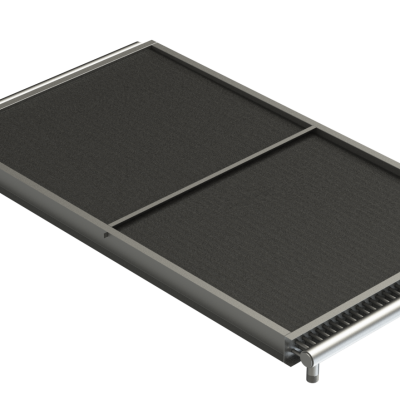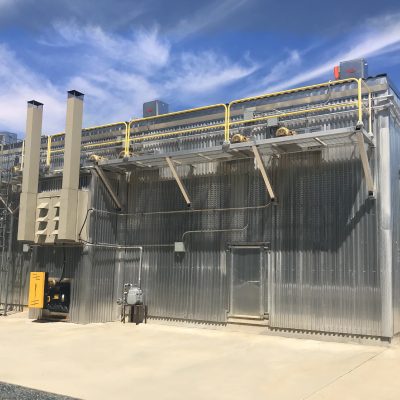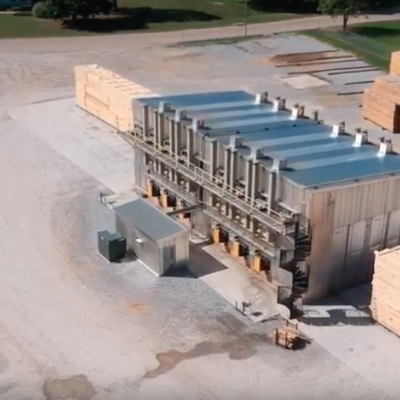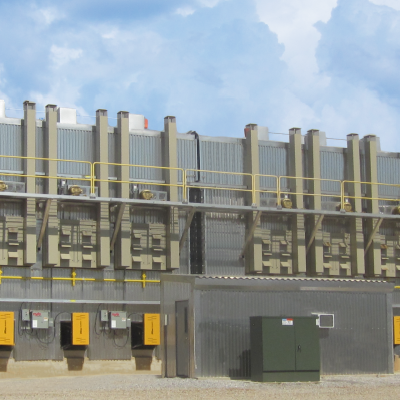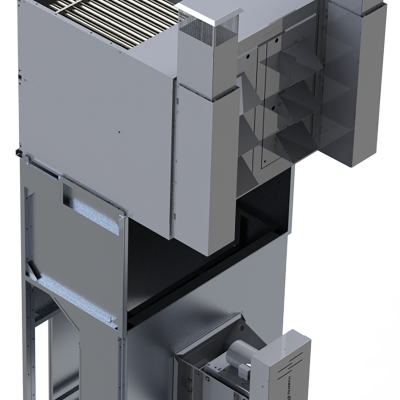Conventional Kilns
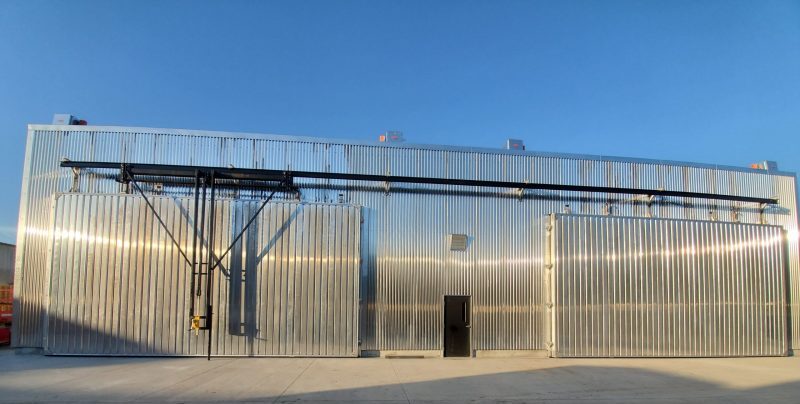
- Conventional kilns are designed for loads up to 350,000 BF.
- Operates at up to 180° – 250°F (82° – 120°C).
- Multiple Heating Options: Indirect Gas Fired, Steam, or Hot water
- Easy to use precision control systems
- Proportional Venting systems
- Heat Recovery Venting systems
- Top-quality results with a short drying time and maximum efficiency.
Direct Fired vs. Indirect
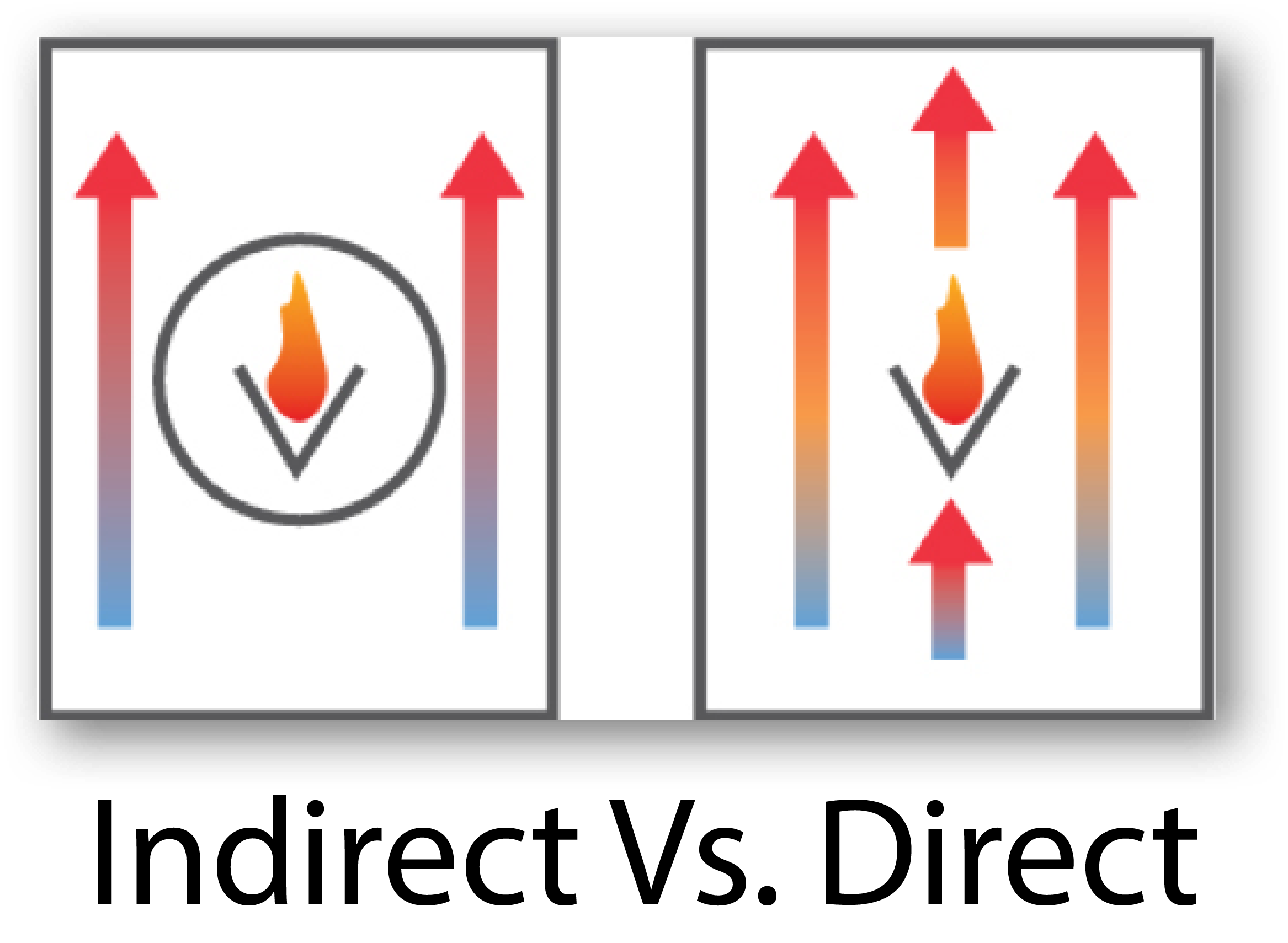 We get this question a lot: “Should I use direct-fired or indirect-fired? What exactly is the difference?”
We get this question a lot: “Should I use direct-fired or indirect-fired? What exactly is the difference?”
Nyle’s indirect-fired conventional kilns use a furnace and a heating coil. The gas flame is entirely contained in the heating coil and heats it from the inside. The air is blown over the coil and gets heated that way.
Nyle uses indirect-fired systems, even when they are a little more expensive to build because they have a better safety record and much better quality control.
- No open flame with Indirect Gas Fired Dry Kilns
- No makeup air for the burner system
- Accurate temperature and RH control
Steam Coils
Engineered steam and hot-water coils are a crucial component of adequately maintaining temperature in a kiln. Just putting in fin-tube and piping works but doesn’t guarantee performance. Over the years, Nyle has worked exclusively with a quality coil provider to develop coils that last. Specifically for the lumber industry.
Nyle has two coil options:
- Better coils are copper tubes/aluminum fins with aluminum casing, and the whole coil is coated with a unique corrosion-resistant material, greatly extending the coil’s life cycle.
- The best coils are stainless steel tubes, headers, and casing with aluminum fins. These are virtually permanent coils.
Nyle Chamber Design
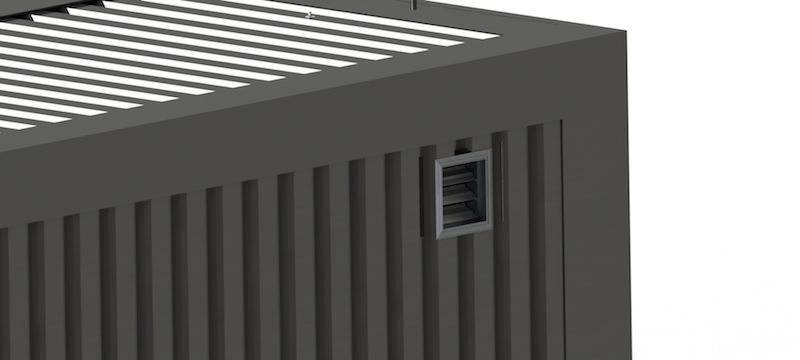
The entire frame of a Nyle-provided kiln is aluminum. The frame is erected on a slab, typically with a 12” by 12” stub wall. The complete frame is prefabricated and will not require any field welding. The kiln frame includes an all-aluminum fan truss that has the fans mounted on the truss at the factory. The door lintel is also part of the frame and is all aluminum.
Door Carrier
Simple, sturdy door carrier made of hot-dipped galvanized steel. It is equipped with a manual door jack. It slides through a top hang “I” beam fixed utilizing supports to the front lintel.
Walls
Made with aluminum pans that hold the insulation with the best R-value of any board insulation. The wall pans attach to the aluminum columns. The pans are designed so that they will not hold water and will drain any condensation that might occur. The wall system is designed to minimize condensation and maximize insulation. The exterior typically is patterned aluminum.
Roof
It consists of an aluminum interior intended to prevent water accumulation. On the interior will be the insulation. The exterior of the roof is aluminum roofing which will be mounted in such a way as to minimize any possibility of leakage. The roof system will be supplied with all appropriate flashing and trim. The roof is typically pitched to the rear.
Heat Recovery Venting
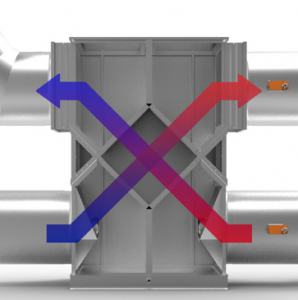 Heat loss through venting is one of the most notable downfalls of conventional kilns. With venting being necessary to remove the excess moisture, you are stuck with substantial energy expenditure. In some cases, heat loss causes the kilns control system to call for the heating system to bring the temperature back up after venting. This heat expenditure can significantly decrease your efficiency and increase your energy costs.
Heat loss through venting is one of the most notable downfalls of conventional kilns. With venting being necessary to remove the excess moisture, you are stuck with substantial energy expenditure. In some cases, heat loss causes the kilns control system to call for the heating system to bring the temperature back up after venting. This heat expenditure can significantly decrease your efficiency and increase your energy costs.
Nyle’s focus is to support all Kiln owners and improve efficiency and productivity in all avenues of lumber drying. Our dynamic heat exchangers help recover energy lost during the drying process of conventional kilns and offer a solution to owners who may be exhausting their boiler’s capacity. This simple system promotes increased production and efficiency while providing an alternative to the expense of installing an additional boiler.
Nyle’s HRV System offers a means to reclaim a portion of this lost heat. With a heat exchanger, we can transfer a large portion of the outgoing vented air’s energy to the incoming air. This process utilizes energy that would otherwise be wasted and minimizes the need for “reheating” while reducing overall fuel consumption by between 15-20%!

